

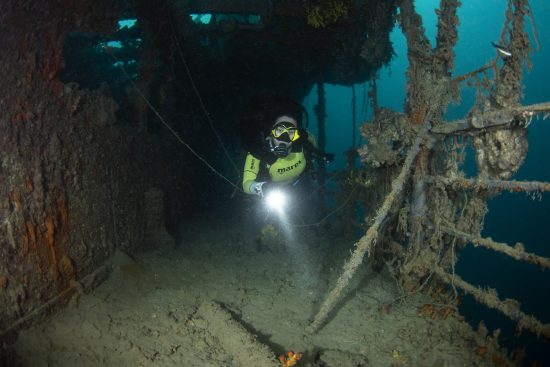
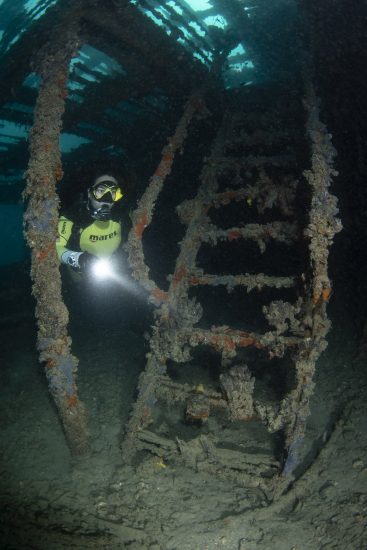
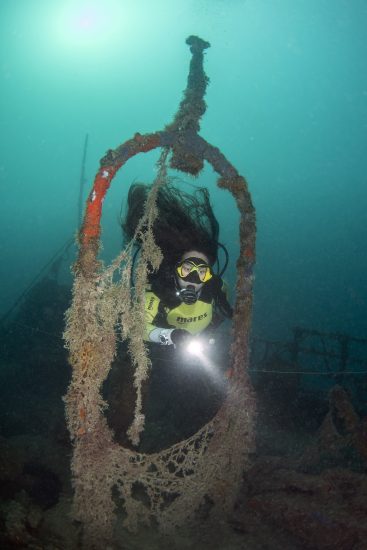
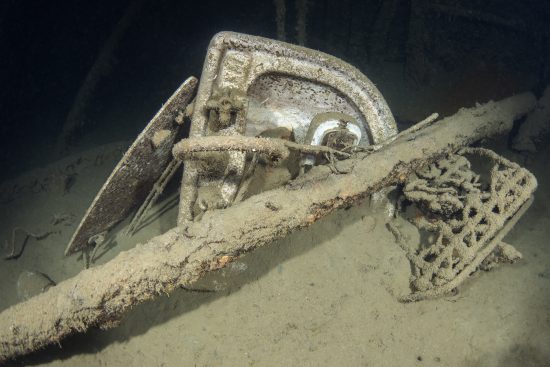
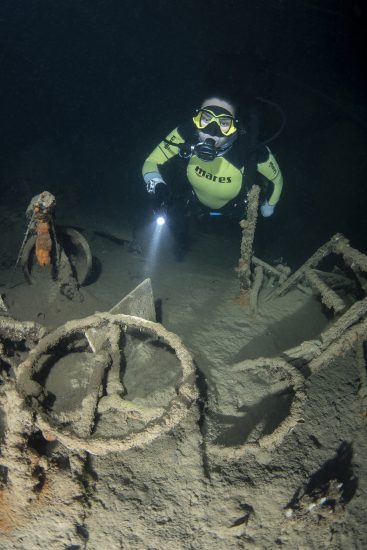
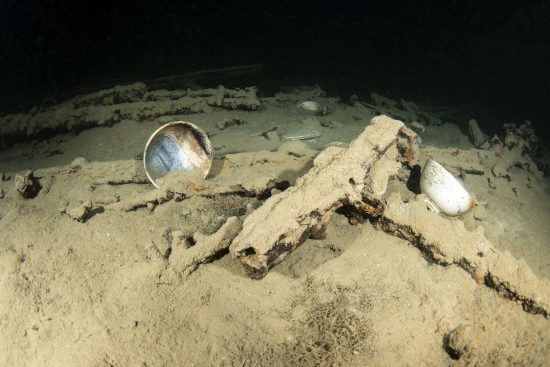
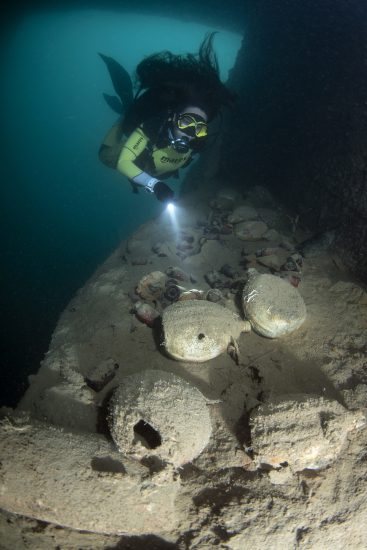
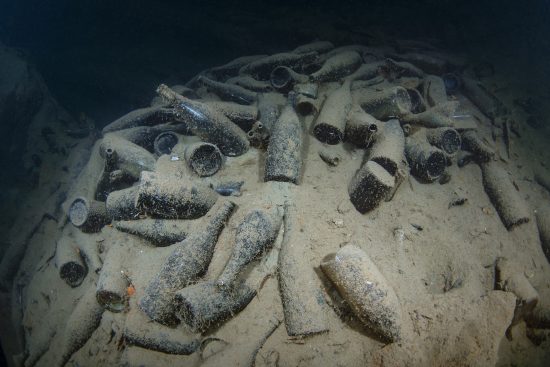
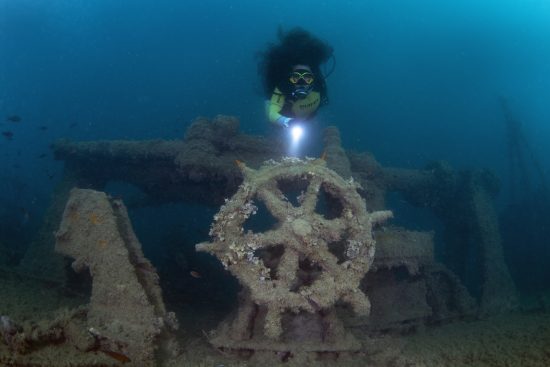
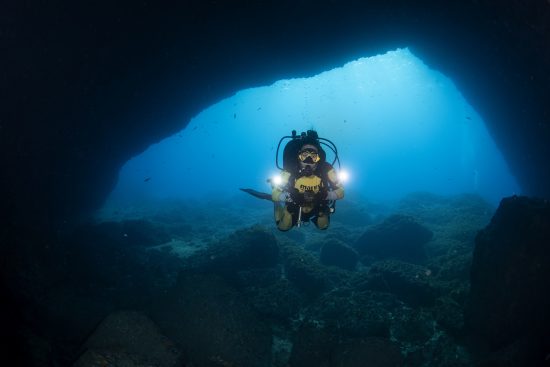
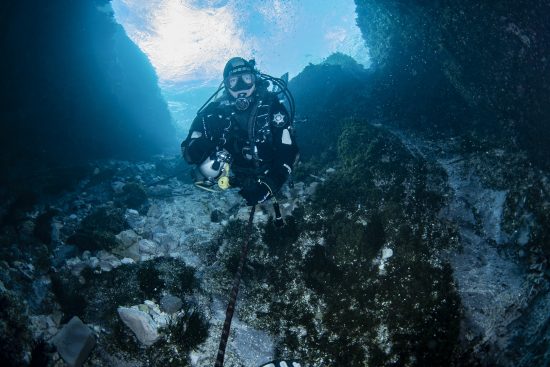
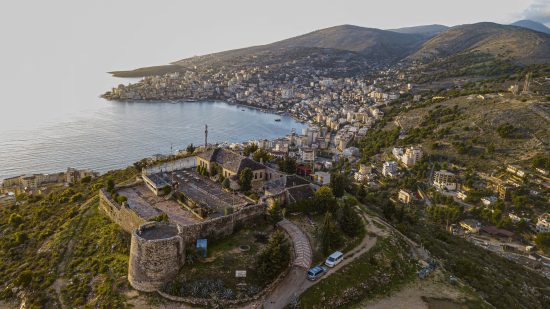
Albania! Yes, Albania and wreck diving, that was our destination last year. Travelling via Belgrade and Tirana all the way to the coastal city of Vlorë and later Sarandë, we wanted to get to know the underwater treasures of Albania.
Upon our arrival in Tirana we were greeted by our friends Adriatik Selami and Enton Mishtaku from the Oazi Blue diving centre. After a brief check of our plans, we headed towards our first destination: Vlorë.
In Vlorë (called 'Valona' by the Italians during World War II) we planned to dive some of the many wrecks the Albanian coast has to offer. Most of the wrecks are connected to the wars that took place in the area through the years.
Vlorë is located in the South of Albania and is the country’s second largest port. It is the largest city on the Albanian coast and also the closest to Italy. The location is of great strategic importance (by the strait of Otranto which controls the entrance to the Adriatic Sea) and was a historically significant military position. Albania also declared its independence in Vlorë.
The Po Wreck
The Vlorë bay, at 35m deep, hosts one of the most impressive wrecks in the whole of the Adriatic, the Italian medical ship 'Po' which was accidentally sunk by British torpedo bombers on March 14th, 1941. Due to the cover of night, the pilots did not realize the ship was a medical vessel, and the accidental attack caused 21 casualties, including four nurses. The ship also hosted Mussolini’s eldest daughter, Edda Ciano Mussolini, who was working on the ship as a nurse for the Red Cross and survived the attack.
The Po was one of 22 medical vessels used for the return of the sick and wounded during World War II. It had medical facilities including an operating room, X-ray machines, a laboratory and corridors that connected the decks that were used for the transport of the sick and wounded.
The Po arrived in Valonë bay on the evening of March 14th, 1941, and was moored about a mile from the mouth of the river Secco, close to the shore. It was moored here to easily transport the sick and wounded from the barracks that were located on a nearby hill. Following the orders of the Marina di Valona, the ship had no lights on during the night, since they would aid British scout planes to identify other ships moored in the bay. Soon after 11PM, five British torpedo bombers from the Greek base of Paramythia crossed the Karaburuni strait across from the Valonë bay. Upon arrival, they launched a 'swordfish' torpedo which managed to hit the Po on its side. The ship started to tilt within minutes and the order to evacuate was issued. During the ensuing panic, one of the life rafts toppled over, drowning two nurses, while a third died attempting to rescue them. The ship sank within ten minutes, with only the ship’s mast protruding from the sea, an indicator of the wreck’s location for years to come. The ship has been there ever since, less than a kilometre from the coast.
Our dive on the Po was planned so that the first and deepest dive would cover the exterior of the boat, while the second dive would cover the interior which still hosts a lot of medical equipment: beds, plates, clothing, medication and many more items which the sea is starting to obscure. The dive along the exterior of the ship was hampered by poor visibility and rainy conditions, but it was still impressive to see schools of fish around this 135m long ship. The ship is also covered in fishermen’s nets, which just indicates how popular of a fishing spot the ship is.
The condition of the ship’s bridge and deck is quite striking, though wooden parts have started giving in to the wear of time. After checking the positions of the lifeboats, we arrived at the mast which is now laid out on the deck after years of being above the surface.
After inspecting the bow of the ship we reached an impressive superstructure, penetrating through its windows into the bridge. The state of the decks made this part of the ship quite a unique experience. The holes left in place of the windows let light through, creating a spectacular game of lights and shadows. Passing through here, it is almost impossible not to think of the tragedy that took place.
Penetration of the inside of the ship is quite tricky due to the sediment buildup and the trouble caused by air bubbles which reduce visibility to only a few centimetres. Vents still hang from the ceilings and cutlery, plates and medical instruments strewn about give you an immediate impression of this lost part of history. Every room hides something new. While time was ticking away for us, we became more and more impressed with everything in front of our eyes. All we can do is hope that the location stays intact for as long as possible so it can be here for future divers also hoping to see what we managed to experience here.
Other than the wreck of the Po, our hosts also took us to dive in their National Park and to the island of Sazan. The entire outer edges of the park are filled with walls that host a lot of small caves and marine life. One such cave may not be very interesting for divers, but would be for a boat trip: Haxhi Ali (Albanian: Shpella e Haxhi Aliut).
The cave is formed by limestone buildup and is located in the heart of the National Park in the Karaburun peninsula, close to cape Gjuhëz. The cave is named after Haxhi Ali, a respected Albanian warrior and sailor from Ulcinj, who is said to have escaped and hid in this cave with his son.
The cave has been host to many historical artefacts proving it has been used for centuries by merchants and passers by. The cave is about 30 meters in length, varying in width from 10 to 15m, with a height of 18m and depth of around 10m.
Sazan Island – the mysterious island
Sazan Island was a military base which hosted over 3,000 soldiers and it is located a few kilometres from Vlorë. The island is quite different compared to its surroundings due to the different flora growing there.
Since the beginning of 2017 it has been open to visitors and locals and has a slightly different climate to the rest of Albania, therefore a lot of plants that you cannot see in other parts of the country. Sazan is rich in lizards, with almost fifteen different species, thirteen of which are very rare.
The seabed of the island is full of life. Our dive was at the location of 'Gryka e xhehnemit' or 'The Gorge of Hell'. The Gorge of Hell is a cave that has an entrance at a depth of only ten meters and extends to almost 100m. In the middle of the cave there is a large air pocket in which you can emerge and see the beautiful hall, and the dark blue colour of the water bathed in the sun shows you the way out of the cave. The cave and its entrance are full of life and a great location for good macro photography and ambient photography.
After four days spent in the Gulf of Vlora, we headed along the coast towards the town of Saranda where we were scheduled to stay for the next four days. The trip to the city of Saranda went smoothly and we were in the company of our kind hosts from Oasis Blue. Arriving in Saranda, we were greeted by our new host, Seimir, from the Spiranca diving center .
Sarande is a coastal town in Albania. It is located about 14 kilometres from the island of Corfu. The city is known for its deep blue Mediterranean waters. Near Saranda are the remains of the ancient city of Butrint, a UNESCO World Heritage Site. In recent years, Saranda has seen a steady increase in tourists, many of whom come by boat cruise. Visitors are attracted by the natural environment of Saranda and its archeological sites. Sarandë has a large Greek population and is considered one of the two centres of the Greek minority in Albania.
In Sarande we only managed to dive into the Blue Eye and the wreck of the Probitas SS as we were not very lucky with the weather. There was a lot of rain and diving conditions were not good.
Blue Eye
The Blue Eye is a source of water and a natural phenomenon located in the south of Albania, in the district of Delvine, about 20 km from the city of Saranda. The spring is a popular tourist attraction, and the clear blue water with bubbles is stunning. For now, the known depth of the spring is over fifty meters, because that is the depth to which divers have descended. The spring is part of a nature reserve with an area of 180 hectares, and is characterized by oak forests and wild figs. In the summer of 2004, the spring temporarily dried up.
This is the initial source of water for the Bistricë River, which is 25 km long and flows south of Saranda into the Ionian Sea. Our dive was accompanied by a small number of foreign tourists who watched curiously, questioning what was going on. Diving into this spring was anything but easy because the spring water has an average flow of 18,400 liters / second. It is almost impossible to get into the hatch against that force without a rope that pulls you to some 18 m depth. The water temperature was a pleasant 12°C. During the ascent we had to be very careful not to rush and be carried away by the water into the course of the river, which has no other access to the shore.
There are still very few foreign tourists in Albania, so the infrastructure and public services are not in perfect condition, but don't let this discourage you from having an adventure there.
SS Probitas
SS Probitas is an Italian ship from World War II. Along the sandy bottom of the Saranda Bay, just 200 meters from the shore, are the remains of an old Italian cargo ship from World War II. Our dive was from the shore where we dived at 10m along a rope that takes you all the way to the stern of the shipwreck.
SS Probitas is about 115 meters long and rests on its port side along the seabed. In its shallowest place, the ship is only 3 meters below the water surface to a maximum depth of 20 meters.
The cargo ship SS Probitas is believed to have been sunk by a German bomber returning to its home country after the 1944 attack on the Balkans. Holes from the impacts can still be seen on the ship.
Our dive started from the outside from the stern towards the bow of the ship. Many pieces of torn fishing nets and sponges can be seen on the deck and on the remains of the deck structures, but the best part of the ship was the interior, which hid the
remains of military and various other equipment, and thousands upon thousands of bottles.
Unfortunately, the very interior of the ship is covered with fine sediment which, after blowing air out of our regulators, falls and quickly obscures the space, so there was not much time for good photos.
Shipwrecks in the Albanian part of the Mediterranean could, in the near future, be a real little paradise for all those who love diving wrecks, as there are about thirty.
Encompassing the Ionian and Adriatic Seas, the Albanian coast is located on the axis of colonization and maritime trade in this part of the world. Over the past decade, the RPM Nautical Foundation has conducted research in Albanian waters as part of the Illyrian Coastal Research Program, identifying several ancient shipwreck sites.
In 2018, INA formed the Ancient Shipwreck Decay Project in Albania and provided extensive support through the financing, staffing and use of the INA Virazon II to tour five famous ancient wrecks off the coast of Albania, all previously discovered by RPM’s research ship Hercules.
After analyzing two of these wrecks, the wreck off Sazan Island from the 1st century and the Joni wreck from the 4th century were identified as the first candidates for future INA excavation projects.
The Joni wreck was determined for the first underwater excavation of a shipwreck in Albanian waters. In addition, from a conservation point of view, this place is known to the local fishing community for facing the most immediate risk of looting.
In addition to the excavation of the Joni site, the ancient shipwreck project in Albania will also continue to explore the entire Albanian coast. Using previous research information from RPMs and other sources, the goal is to establish target areas along the
Albanian coast to explore depths of 20-50 m, and then further explore those areas and look for evidence of additional ancient shipwrecks. As Albania intends to enact a diving law and turn to the European market, early identification and protection of significant sites is crucial for the preservation of currently unidentified sites with national heritage potential, as well as all other known sites with shipwrecks.
Albania is no longer just a country of thousands of bunkers and mountains, but is becoming an increasingly popular place to enjoy sandy beaches and Mediterranean specialties. More than 350 kilometres long coast of the Adriatic and Ionian Seas there are a handful of places for pure enjoyment of nature and gastronomy.
Albanian cuisine was uniquely influenced by Greek, Italian, Turkish and Syrian cuisine. Albanians like to enjoy a variety of appetizers such as soup, pies, chicken pilaf and various other delicacies, and the main meal of the day is lunch, which usually consists of a main course - usually lamb or beef - and Ionian and Adriatic Sea seafood specialties . Salads are usually seasoned with olive oil or soy, and with tomatoes, cucumbers, olives. There is always feta or shepherd's cheese.
Among the favourite soft drinks is 'boza' (a refreshing drink prepared from corn), which is drunk in northern Albania, especially in the town of Kukës, as well as 'rehani' (a drink made from grape juice) which is typical of central Albania. If you like cognac, then this is an opportunity to try the famous Albanian cognac 'Skenderbeg', which has an exceptional taste.
Text and photos by Damir Zurub.
 Damir
Damir 30th July 2020
30th July 2020